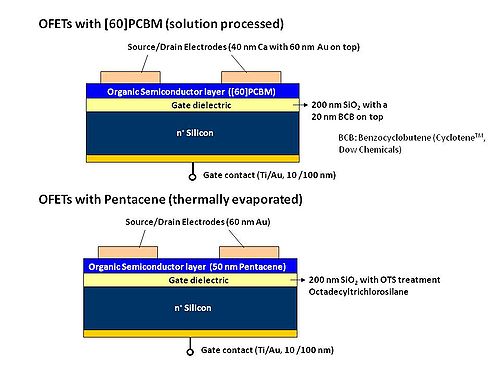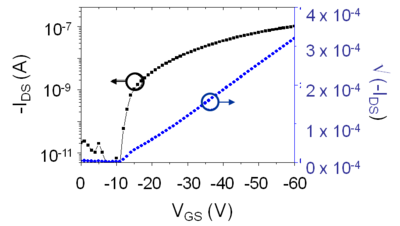Difference between revisions of "OFET fabrication and characterization"
Jump to navigation
Jump to search
Cmditradmin (talk | contribs) m |
Cmditradmin (talk | contribs) m (→Significance) |
||
| Line 3: | Line 3: | ||
===Significance=== | ===Significance=== | ||
<swf width=500 height=400>images/0/04/Ofet_roll_short.swf</swf> | |||
All parts of an OFET can be made from plastics or thin flexible metals so that this could be used for flexible or printed electronics. | All parts of an OFET can be made from plastics or thin flexible metals so that this could be used for flexible or printed electronics. | ||
| Line 9: | Line 11: | ||
[[Image:Transfer_curve.png|thumb|400px|right| The OFET transfer curve showing source drain current in black and the squareroot of the source drain current in blue, plotted against the gate voltage. ]] | [[Image:Transfer_curve.png|thumb|400px|right| The OFET transfer curve showing source drain current in black and the squareroot of the source drain current in blue, plotted against the gate voltage. ]] | ||
<br clear='all'> | <br clear='all'> | ||
===Operation=== | ===Operation=== | ||
Revision as of 13:13, 22 June 2011
Background
The organic field effect transistor has a layered construction. A voltage applied to the gate causes the polymer layer to become a semiconductor and allows current flow between the source and drain contact.
Significance
<swf width=500 height=400>images/0/04/Ofet_roll_short.swf</swf>
All parts of an OFET can be made from plastics or thin flexible metals so that this could be used for flexible or printed electronics.

